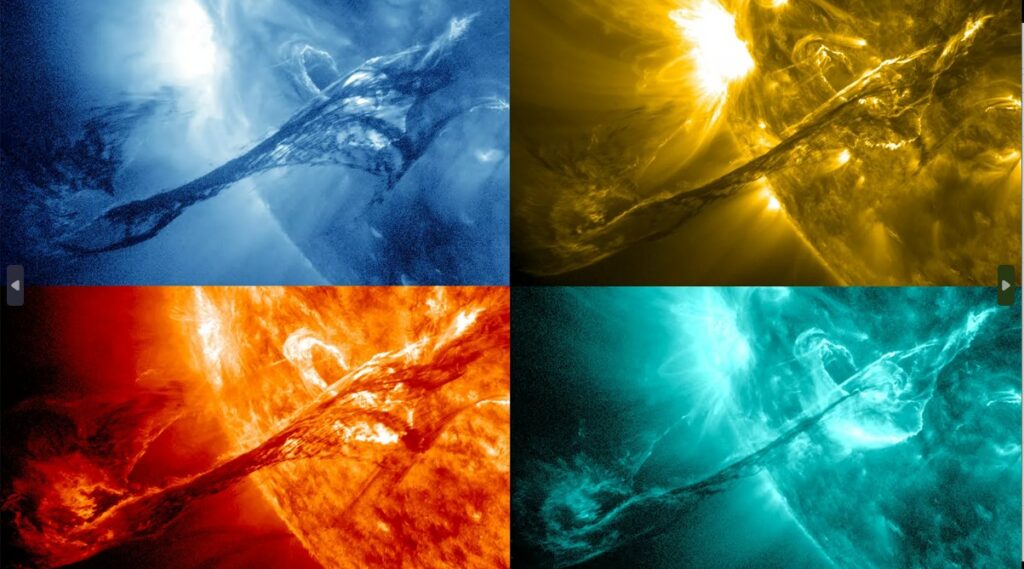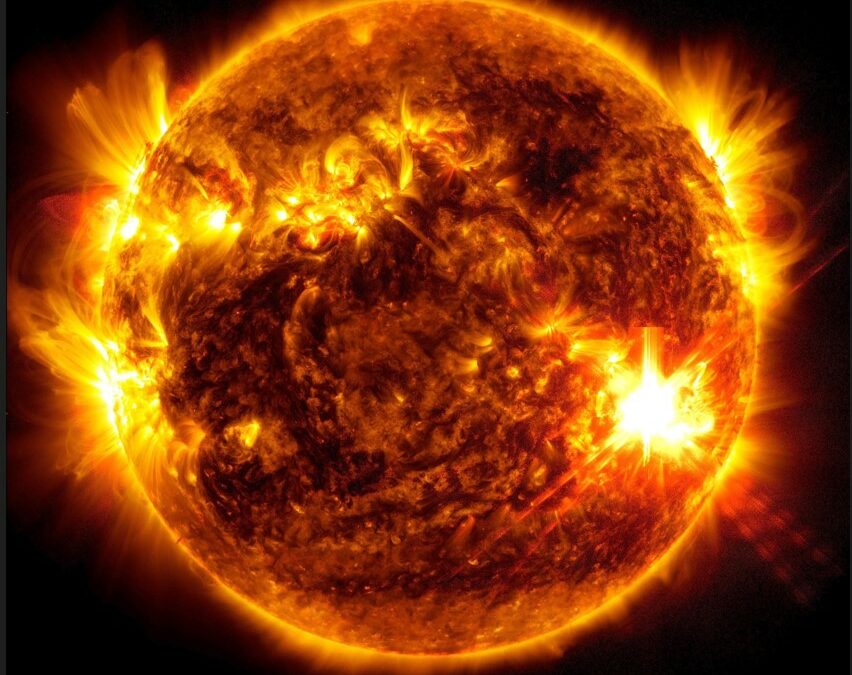The University of New Hampshire was awarded $24.3 million to build sensors for a high-priority alert system that will monitor the effects of space weather and the solar wind—caused by explosions on the sun—for potential interruptions to satellite communications, electric power grids and GPS systems.
As part of the Solar Wind Plasma Sensor contract awarded by NASA on behalf of the National Oceanic and Atmospheric Administration (NOAA). UNH will develop and build two sensors for the Lagrange 1 Series project to monitor the solar wind—a supersonic flow of hot particles known as plasma, from the sun. The sensors at L1 will help identify and give a ‘head’s up’ warning of any concerns in about 100 minutes for slower events and about ten minutes for faster events.
This data will be used in both real time for NOAA’s Space Weather Prediction Center alert system, which issues forecasts, warnings and alerts that help mitigate any potential issues caused by space weather, as well as be available to the scientific community to study the response of the Earth’s environment to space weather events.
“While the data may be used in space weather impact studies, this is an operational mission to help raise the alarm if any large-scale solar wind structures, such as coronal mass ejections, passing the L1 point are considered dangerous,” Toni Galvin, research professor and director of N.H. Space Grant Consortium. “Because of that, the instrument requirements are more stringent, and they have to be able to measure the most extreme conditions with high accuracy, because those are the conditions that can cause the most potential harm to technology.”

The sun’s coronal mass ejections seen in four different extreme ultraviolet wavelengths (335, 171, 131, and 304 angstroms) captured by SDO, STEREO and SOHO. CREDIT: NASA/Goddard Space Flight Center.
UNH will oversee the design, development, fabrication, integration, testing and evaluation of the sensors. The researchers will also support the launch, supply and maintain the instrument ground support equipment and support post-launch mission operations at the NOAA Satellite Operations Facility in Suitland, Maryland. UNH will work with subcontractor Johns Hopkins Applied Physics Laboratory where researchers there will focus on the electronics for the instruments. The project is expected to take nine years to complete.
The sensors will measure solar winds—a continuous stream of particles, mainly protons and electrons in a state known as a plasma, flowing outward from the Sun. The measurements will be used to characterize coronal mass ejections, corotating interaction regions, interplanetary shocks and high-speed flows associated with coronal holes. The measurements will also include observing the bulk ion velocity, ion temperature and density and derived dynamic pressure.
UNH’s Space Science Center has a long-standing heritage with solar wind instrumentation and a strong engineering and science background with in situ instrumentation for both operational and scientific missions. Those include the delivery of two solar wind instruments for the NASA Solar Terrestrial Relations Observatory (STEREO) mission, a major hardware contribution to the ESA Solar Orbiter Solar Wind Plasma Analyser (SWA) Heavy Ion Sensor (HIS), as well as involvement in the Energetic Heavy Ion Sensor (EHIS) for the Geostationary Operational Environmental Satellite (GOES-R) Program and work for the magnetometer (MAG) instrument for the Space Weather Follow On L1 (SWFO-L1) mission.
NASA and NOAA oversee the development, launch, testing, and operation of all the satellites in the L1 Series project. NOAA is the program owner that provides funds and manages the program, operations, and data products and dissemination to users. NASA and commercial partners develop, build and launch the instruments and spacecraft on behalf of NOAA.
The UNH team includes Lynn Kistler, project director; Antoinette Galvin, deputy project director; and Christopher Mouikis, ground software and data validation lead.



 Return to the Concord Monitor
Return to the Concord Monitor